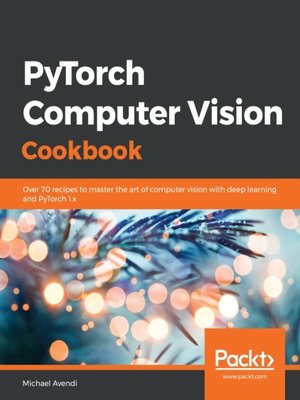
Sign up to save your library
With an OverDrive account, you can save your favorite libraries for at-a-glance information about availability. Find out more about OverDrive accounts.
Find this title in Libby, the library reading app by OverDrive.



Search for a digital library with this title
Title found at these libraries:
| Library Name | Distance |
|---|---|
| Loading... |
Discover powerful ways to use deep learning algorithms and solve real-world computer vision problems using Python
Key Features
Book Description
Computer vision techniques play an integral role in helping developers gain a high-level understanding of digital images and videos. With this book, you'll learn how to solve the trickiest problems in computer vision (CV) using the power of deep learning algorithms, and leverage the latest features of PyTorch 1.x to perform a variety of CV tasks.
Starting with a quick overview of the PyTorch library and key deep learning concepts, the book then covers common and not-so-common challenges faced while performing image recognition, image segmentation, object detection, image generation, and other tasks. Next, you'll understand how to implement these tasks using various deep learning architectures such as convolutional neural networks (CNNs), recurrent neural networks (RNNs), long short-term memory (LSTM), and generative adversarial networks (GANs). Using a problem-solution approach, you'll learn how to solve any issue you might face while fine-tuning the performance of a model or integrating it into your application. Later, you'll get to grips with scaling your model to handle larger workloads, and implementing best practices for training models efficiently.
By the end of this CV book, you'll be proficient in confidently solving many CV related problems using deep learning and PyTorch.
What you will learn
Who this book is for
Computer vision professionals, data scientists, deep learning engineers, and AI developers looking for quick solutions for various computer vision problems will find this book useful. Intermediate-level knowledge of computer vision concepts, along with Python programming experience is required.







